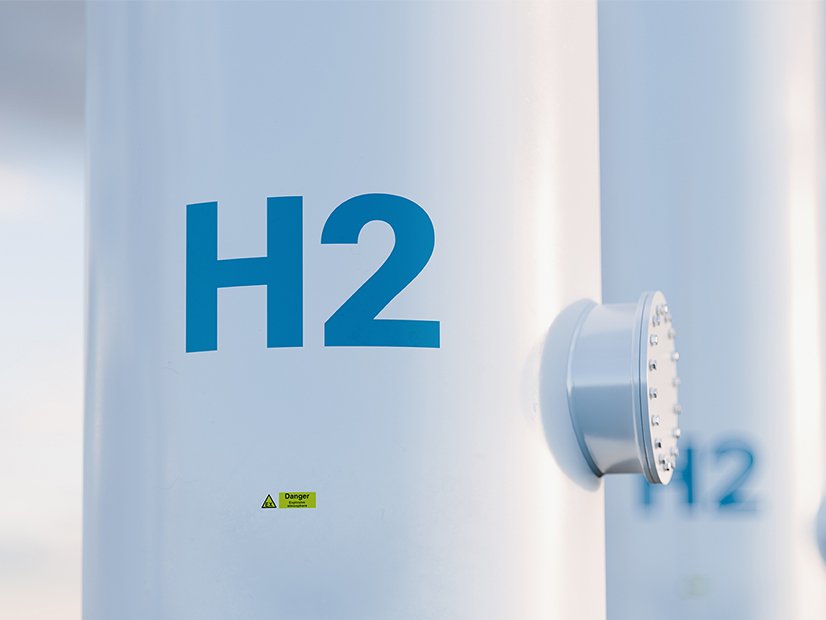People who want to use clean hydrogen to go carbon-free reportedly have a lot of interest in doing so, but they plan to wait until it becomes available, according to Crane.

Under a new plan, the US Energy Department would invest $1 billion to increase demand for clean hydrogen in order to provide the first large-scale producers with initial revenue and give potential buyers assurance.
As part of its eagerly awaited $8 billion regional hydrogen hub programme launched last September, the Energy department intends to publish a notice of intent on Wednesday that investigates a plan to make demand-side commitments to hydrogen producers.
The notice, which was previously disclosed to Bloomberg Law, requests responses to seven questions regarding the program’s implementation and the most effective ways to increase demand for hydrogen. These mechanisms, which would be implemented by a private organisation outside the federal government, could include pay-for-delivery contracts, off-take backstops, and feasibility funding to support off-takers’ analysis.
The program addresses a key challenge in scaling up a hydrogen industry—and other nascent clean energy technologies—as part of the Biden administration’s goal of achieving net-zero greenhouse gas emissions across the US economy by 2050.
Energy industry buyers are naturally conservative and hesitant to dramatically shake up their procurement strategies amid questions about supply, price, and technology costs, said David Crane, the department’s under secretary of infrastructure, in an interview with Bloomberg Law.
People who want to use clean hydrogen to go carbon-free reportedly have a lot of interest in doing so, but they plan to wait until it becomes available, according to Crane. According to him, in other nations with more developed hydrogen industries like Germany, the United Kingdom, Australia, and Japan, demand hasn’t kept up with supply.
Crane, who formerly held the positions of president and CEO of power giant NRG Energy, claimed that no supply-side procurement professional ever lost their job by continuing to purchase energy in the same manner as they did the previous year. “When you try to do something unreliable, you lose your job.”
In order to form a critical mass of customers, a sufficient number of hydrogen production facilities must be operational before the government can act as a “short-to-medium-term bridge,” according to Crane. He said that in order for those clients—heavy-duty trucking, steel, cement, chemicals, and other hard-to-decarbonize industries—to use hydrogen, they would need to invest heavily in upgrades to their facilities or fleet.
The DOE will base the program’s design on public comments received by 5 p.m. Eastern on July 24.
Hydrogen production is expected to rise from zero to 10 million metric tons by 2030, creating 100,000 net new jobs. By 2050, it could reach 50 million metric tons. Clean hydrogen includes renewable energy, nuclear energy, and natural gas with carbon capture and storage.
While pink hydrogen uses nuclear energy, green hydrogen uses renewable electricity to split water into molecules of oxygen and hydrogen without releasing carbon. Gray hydrogen costs three to six times as much as green hydrogen. Federal incentives are being provided to the sector to increase supply.
Up to $7 billion in funding for regional hubs, including a mix of hydrogen projects powered by renewable, blue, and nuclear energy, is what the department intends to announce.
In the Inflation Reduction Act, the Treasury Department is creating a tax credit for hydrogen production of up to $3 per kilogramme of clean hydrogen.
The law authorises loans totaling more than $300 billion for clean energy initiatives, including hydrogen production. While the Defense Production Act supports US electrolyzer production, the 2021 infrastructure law supports hydrogen electrolysis.
The feasibility of the hydrogen industry is in question, and there are also concerns about emissions and the capacity of the pipelines and storage facilities. The DOE’s programme is supported by the White House Council of Economic Advisers, who contend that demand-side incentives are essential to prevent market failures. Only 10% of the 12 million metric tonnes of announced capacity as of late 2022 have been significant financial commitments.
The council contends that lack of near-term demand certainty can increase the risk of clean hydrogen projects, deterring private investment in infrastructure and production. In order to scale up new technology, the Department of Energy (DOE) is taking a well-known route, taking as its model the DOE’s funding programme for photovoltaics in the late 1970s and early 1980s.
The HALEU Availability Program provides enrichment facilities with purchase commitments until next-generation reactors start operating by the end of the decade. This programme is being used by the DOE’s nuclear office to advance measures to encourage production of highly enriched uranium for advanced nuclear reactors.
According to Crane, the department is in communication with other branches of the government, including the Defense Department, about potential hydrogen procurement requirements. “We’re going to use every lever we have,” the group said.
The Army’s assistant secretary for installations, energy, and the environment, Rachel Jacobson, gave a speech last month in front of a hydrogen-powered emergency response vehicle that was parked outside the Energy Department’s main building.
We are the ones “sending out that demand signal,” said Meredith Berger, assistant secretary of the Navy for energy, installations, and environment, in an interview on May 31.
The DOD is “working hand in hand with industry to make sure that, as we send out that signal, we are working with them to get that response that really is tailored to shift where the market is going” as it examines cutting-edge technologies, according to Berger.
